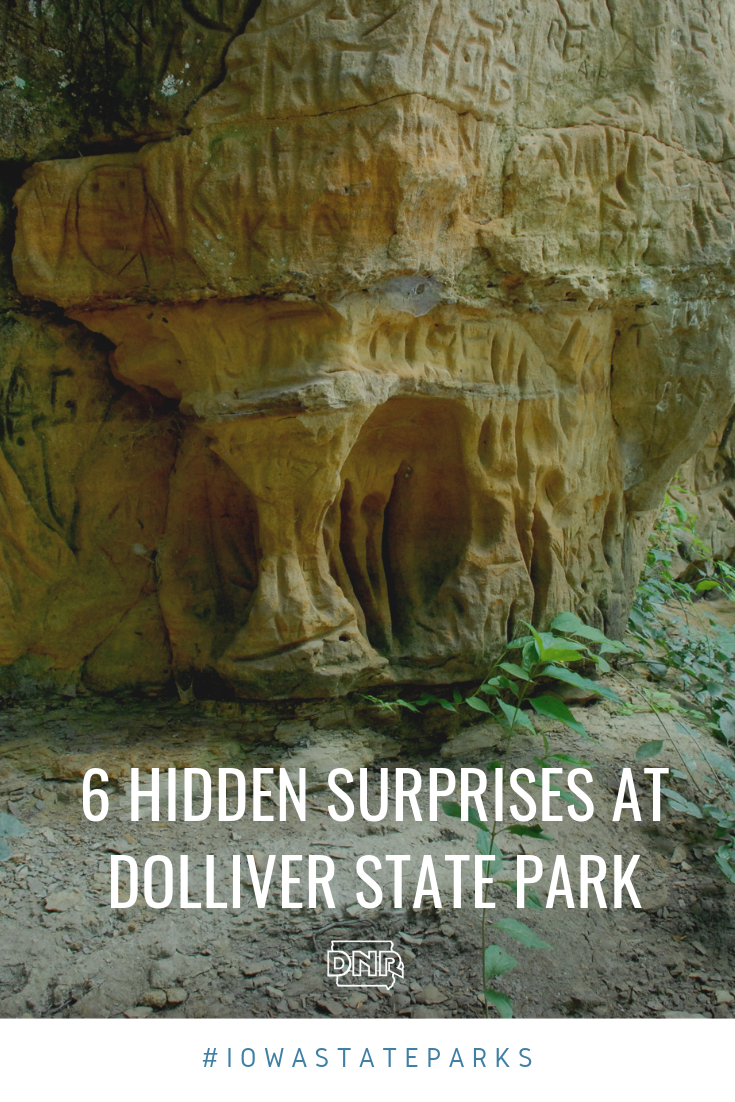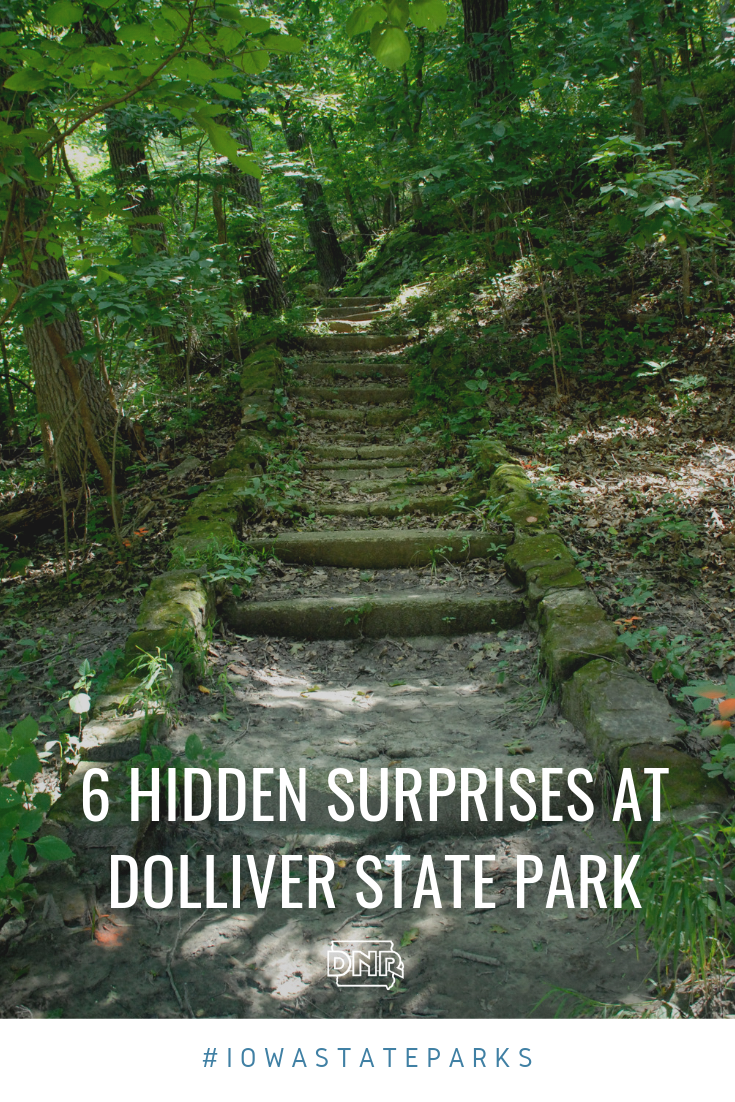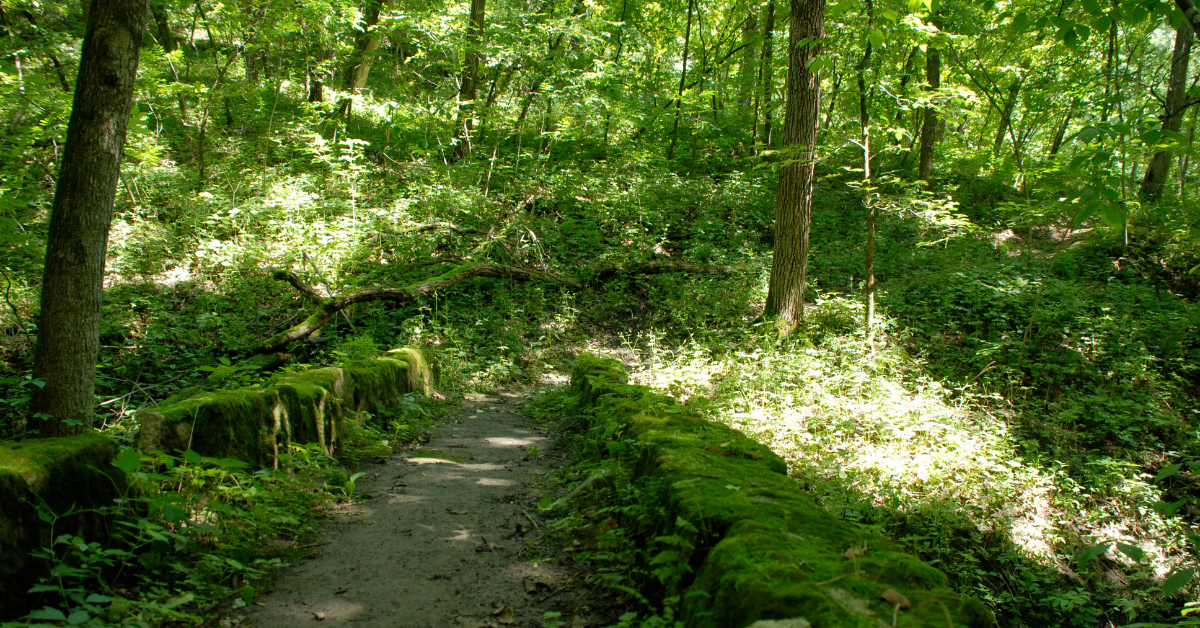Located along the Des Moines River just south of Fort Dodge, Dolliver Memorial State Park is packed with hidden gems and unique natural history. With the help of park manager Kevin Henning, here’s six surprising facts about Dolliver worth knowing before visiting:
 The Lead Tablet that Made History
The Lead Tablet that Made History
Discovered in 1912 by a family traveling in the Fort Dodge area, a single lead tablet played an important role in the foundation of Dolliver. A Latin inscription on the tablet stated that French explorer Father Hennepin had planted it in the park two centuries prior, but was later found to be a lie. The curator of state archives at the time of the tablet’s discovery was fascinated with the area’s natural features and helped ignite the process of turning it into a state park. Now, 100 years later, Iowans still enjoy the beautiful and historical remnants today.
Becoming a Park
Founded in the 1930s to create jobs, the Civilian Conservation Corps (CCC) and Works Progress Administration (WPA) were core federal programs in constructing Dolliver into a state park. Some of the bridges and buildings in the park were built and occupied by the CCC that now form the park’s group camp, which can be rented today.
“Spooky” Remains
The box canyon known as Boneyard Hollow features rocky streams and beautiful cliff formations, but where does the chilling name “boneyard” come from? Local legends say when Native Americans from the Woodland era inhabited the area, they drove bison off the cliffs to hunt them. Deer and bison bones can still be found in the canyon today!
Picturesque Petroglyphs
Also found in Boneyard Hollow, it is believed that the Oneota people from the Woodland era drew animal petroglyphs on multiple rock formations in the canyon. Look closely to see a glyph of a bison hidden on the rock!
 Copperas Beds Minerals
Copperas Beds Minerals
Visitors can walk a trail to see this 100-foot sandstone bluff, which gets its name from the mineral deposits left behind from erosion of the stone. The rusty red mineral was likely used by Native Americans to make dyes and paints. The copperas deposits can be seen on logs, sticks and even in the sandstone itself.
Native American Mounds
Also from the Woodland era, Dolliver has three Native American mounds near the southeast end of the park. There are two dome-shaped conical mounds that are thought to have been used for burials years ago and one linear mound. Out of respect, park visitors who spot burial mounds should help preserve them by not treading on the mounds or disturbing them.
If you’re looking to spend time experiencing history or enjoy scenic views along the Des Moines River, check out Dolliver Memorial State Park soon!
For more, check out our Iowa State Parks and Natural Iowa Travel boards on Pinterest.
